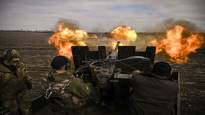Leaked US documents paint a grim picture of the state of air defense in Ukraine.
Without a significant amount of additional ammunition, Ukraine’s entire air defense network may collapse, according to US officials and leaked documents, writes an American newspaper New York Times (you will switch to another service).
According to the newspaper, this could lead to the Russian president Vladimir Putin could send its military aircraft to Ukraine in ways that could change the course of the war.
In the early days of the invasion, Russian planes made hundreds of sorties in Ukraine. However, the importance of Russian planes has been weakened by miscalculations in Russia’s strategy and how Ukraine’s warplanes and air defenses survived the initial stages of the attack. This prevented Moscow from taking over the airspace over Ukraine, and forced Russia to withdraw much of its air force from the fighting.
Now, U.S. defense officials worry that Russian attacks are depleting Ukraine’s stockpile of missiles it uses to defend itself.
According to estimates found among leaked documents, Ukraine’s defense against most fighters and also some bombers relies on the Soviet-era S-300 and Buk air defense systems. The S-300’s ammunition is predicted to run out by May 3rd, and the Buk’s around mid-April. The estimate was based on consumption at the time, and according to the magazine, it is not clear whether the situation has changed.
Russia could decide to send its planes into the sky again
A large part of the efforts of the Russian Air Force is focused on the front line. According to an estimate in the leaked document, Ukraine’s air defenses meant to protect front-line troops will be completely depleted by May 23. This, in turn, is estimated to lead to strain on the air defense network deeper inside Ukraine.
If that happens, Russia could decide it’s finally safe to send its fighter jets and bombers back into the air, officials say. This, in turn, could threaten the course of the war in the country.
According to high-ranking Ministry of Defense officials, such a decision would be a significant challenge for Ukraine. Especially if Russian planes are given a freer hand than before to attack positions of Ukrainian forces and important artillery sites inside the country.
A Russian fighter almost shot down a British plane in September
The leak also reveals that a Russian fighter almost shot down a British surveillance plane last year, writes a US newspaper Washington Post (you will switch to another service).
The near miss happened at the end of September off the coast of Crimea. Russia occupied the peninsula in the Black Sea in 2014.
According to the newspaper, the case is more significant than announced based on the leak and could have drawn NATO countries directly into the war in Ukraine.
British Defense Secretary Ben Wallace reported the incident to the House of Commons in October, saying two Russian fighter jets encountered a British RC-135 reconnaissance aircraft in international airspace over the Black Sea.
Wallace told the decision-makers that one of the Russian planes had launched a missile from a distance, but he did not describe the incident that almost led to the downing of the British plane. Instead, he considered the launch to have been a technical fault and discussed the matter with the Russian defense authorities.
The near-miss situation is a striking example of balancing in the West
According to the newspaper, the case is a typical example of how Western countries have tried to balance trying to help Ukraine and gather information about the war without getting into a direct conflict with Russia.
Russian officials have sought to portray NATO countries as aggressors, while the United States and its allies have said they support Ukraine but are not at war with Russia.
The document about the September near miss is marked “SECRET/NOFORN,” meaning it may not be distributed outside the United States.
The document also describes several other cases in which Russia has reacted to US, British and French surveillance flights between October and the end of February last year.
The United States said in March that its unmanned military aircraft had crashed in the Black Sea after being hit by a Russian fighter jet.
US Secretary of Defense Lloyd Austin said in March that the United States would continue to fly “wherever international law allows.” Thus, at the same time, he rejected the idea of a protection zone unilaterally declared by Russia in the Black Sea.
